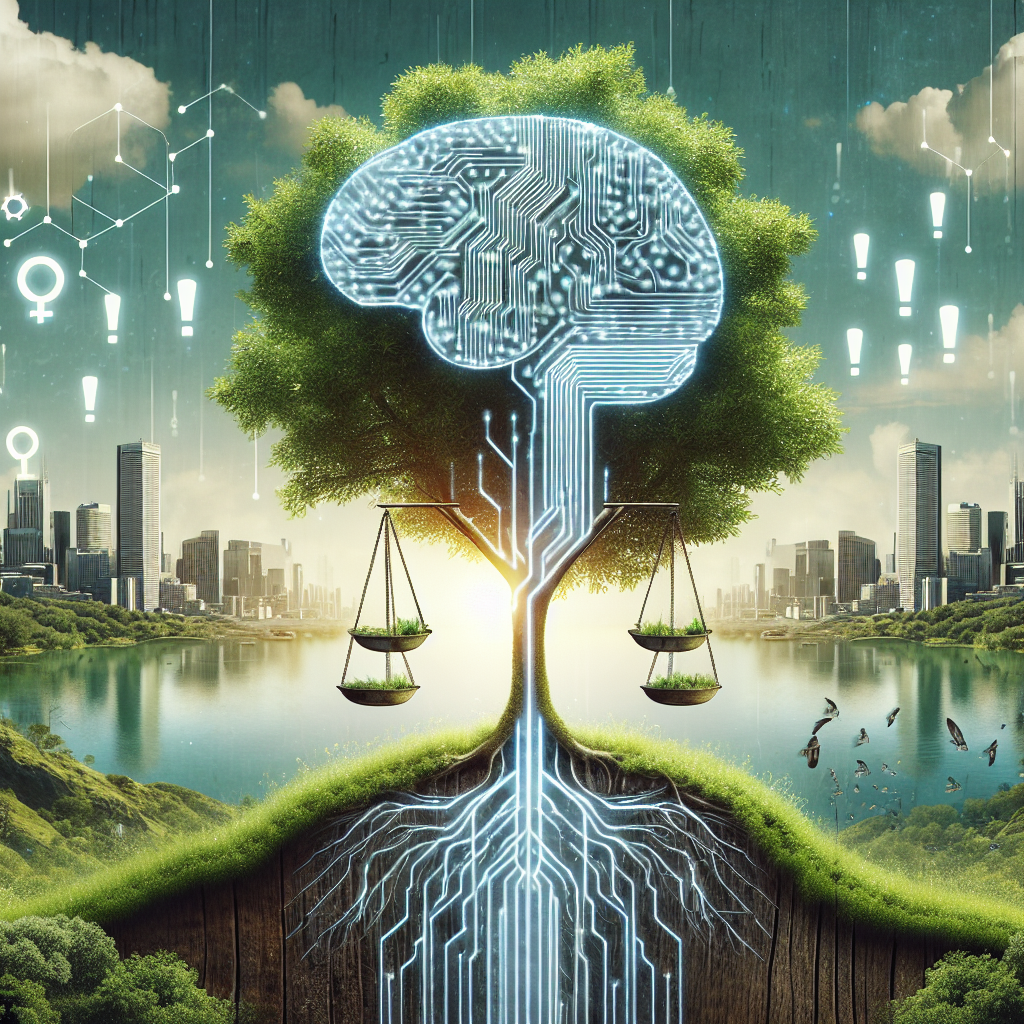Artificial Intelligence (AI) has the potential to revolutionize the field of environmental conservation, offering new tools and capabilities to better understand and protect our planet. However, along with these opportunities come a host of ethical challenges that must be addressed to ensure that AI is used in a responsible and sustainable manner. In this article, we will explore some of the key ethical issues surrounding the use of AI in environmental conservation, as well as potential solutions to these challenges.
One of the main ethical challenges of AI in environmental conservation is the potential for unintended consequences. AI systems are designed to learn and adapt based on the data they are fed, but this can sometimes lead to unexpected outcomes. For example, a conservation AI system may be trained to protect a certain species of plant or animal, but if the data it is trained on is biased or incomplete, it may end up inadvertently harming other species or ecosystems. This issue is exacerbated by the fact that AI systems are often opaque and difficult to interpret, making it hard to understand why they make certain decisions.
Another ethical challenge is the potential for AI to exacerbate existing inequalities in environmental conservation. AI systems require large amounts of data to function effectively, and this data is often collected by researchers and organizations with the resources to do so. This means that communities with limited resources or access to technology may be left out of the conservation process, leading to further marginalization and disenfranchisement. Additionally, AI systems may be used to prioritize certain conservation efforts over others, potentially favoring those that benefit more affluent or powerful groups.
Furthermore, there is the issue of data privacy and security. AI systems rely on vast amounts of data to function, and this data often includes sensitive information about individuals and communities. If this data is not properly protected, it could be vulnerable to hacking or misuse, leading to potential harms for those involved. Additionally, there is the risk that AI systems could be used to infringe on individuals’ privacy rights, for example by monitoring their movements or behavior without their consent.
One potential solution to these ethical challenges is to prioritize transparency and accountability in the development and deployment of AI systems for environmental conservation. This means ensuring that AI algorithms are open and interpretable, so that researchers and stakeholders can understand how they work and why they make certain decisions. Additionally, there should be mechanisms in place to hold developers and users of AI systems accountable for any unintended consequences that may arise.
Another solution is to involve communities and stakeholders in the design and implementation of AI systems for environmental conservation. By including a diverse range of perspectives and voices in the decision-making process, it is possible to ensure that AI systems are used in a way that is fair and equitable for all involved. This could involve consulting with local communities, indigenous groups, and other stakeholders to ensure that their needs and concerns are taken into account.
Furthermore, it is important to prioritize data privacy and security in the development of AI systems for environmental conservation. This means implementing robust data protection measures, such as encryption and secure storage, to ensure that sensitive information is kept safe from harm. Additionally, there should be clear guidelines in place for how data is collected, used, and shared, to ensure that individuals’ privacy rights are respected.
In conclusion, the use of AI in environmental conservation offers great promise for protecting our planet and its biodiversity. However, it is essential to address the ethical challenges that arise from this technology in order to ensure that it is used in a responsible and sustainable manner. By prioritizing transparency, accountability, inclusivity, and data privacy, it is possible to harness the power of AI for the greater good of the environment and all its inhabitants.
FAQs:
Q: Can AI help to protect endangered species?
A: Yes, AI can be used to analyze vast amounts of data to track and monitor endangered species, identify threats to their survival, and develop strategies for their protection.
Q: How can AI be used to combat climate change?
A: AI can be used to optimize energy use, predict climate patterns, and develop more sustainable agricultural practices, among other applications, to help mitigate the effects of climate change.
Q: What are some potential risks of using AI in environmental conservation?
A: Some potential risks include unintended consequences, exacerbation of inequalities, and threats to data privacy and security.
Q: How can stakeholders be involved in the development of AI systems for environmental conservation?
A: Stakeholders can be involved through consultation, participation in decision-making processes, and ensuring that their needs and concerns are taken into account in the design and implementation of AI systems.

